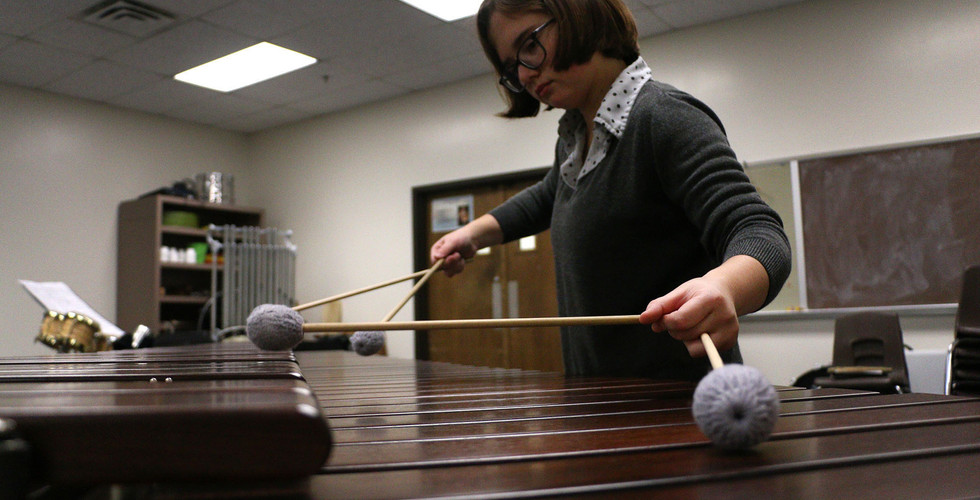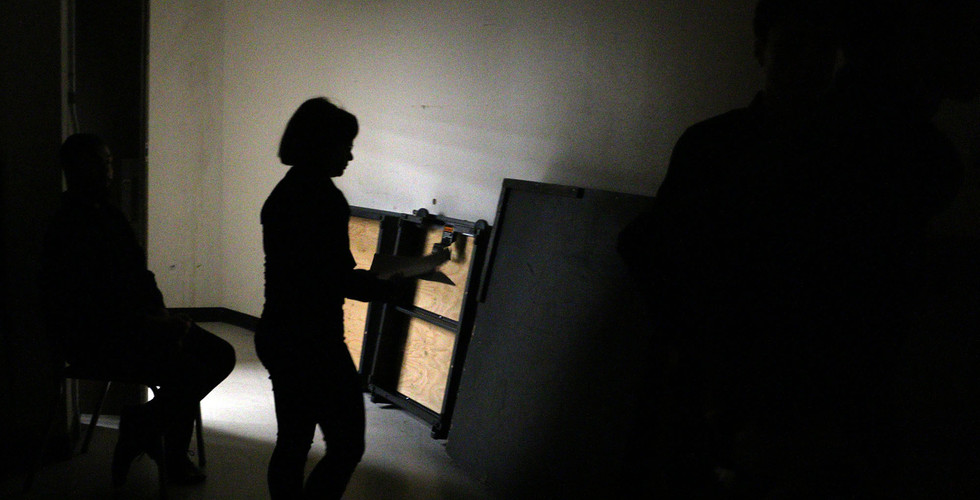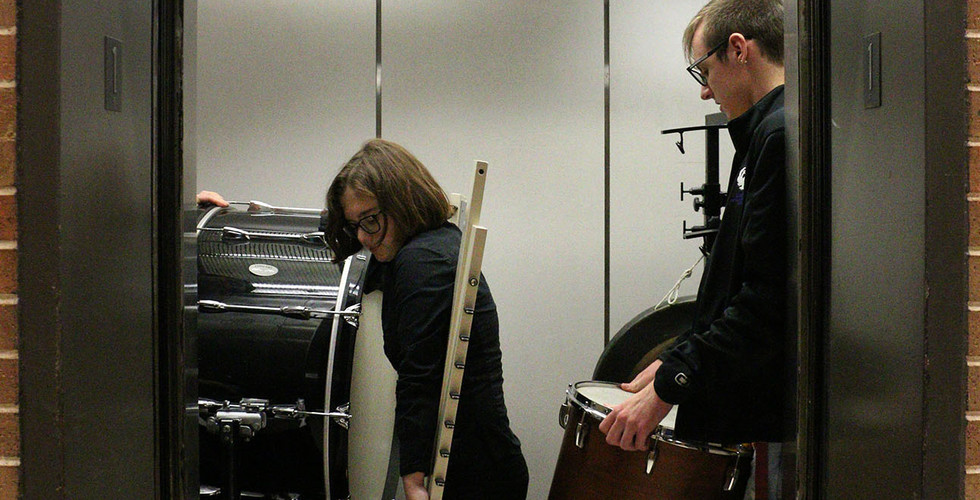A look at UTA's percussion ensemble
- Audrey Henvey
- Feb 1, 2020
- 3 min read
By Audrey Henvey
The music section of UT Arlington’s Fine Arts Building doesn’t have a freight elevator.
That doesn’t mean much to the average student, but for percussion studio students, it means an evening concert process starts at least an hour before the first mallet strikes a note onstage.
The process starts on the building’s second floor in a tucked-away fluorescent-lit room. Roughly 13 students, some dressed in black concert attire and a couple still wearing t-shirts, peel the rows of rosewood blocks from their perches on multiple marimbas, disassemble the marimbas themselves and carry the parts down the stairs into the lower recital hall. Then they put them back together onstage.
Other instruments will trickle in, too. Those, along with the more manageable marimba parts, will have taken a ride on the music building elevator if they were small enough to fit.
The marimbas will stay assembled in the brick-wall recital hall for a few hours until the evening’s concert ends. Then they’ll lose their structures yet again and be carried up the stairs back into their home.
During both transitions, music education senior Katherine Jobe is there to help. When she hears something that sounds like an instrument is being mishandled, she might remind her fellow musicians that there is only so much rosewood in the world.
She leads the Percussion Club, performs in the symphony orchestra and pushed in an extra year with the marching band. That’s on top of performing with the percussion ensemble and preparing solo repertoire for her upcoming senior recital.
When Jobe’s high school percussion director left for another job, his last goodbye to Jobe, then a high school senior interested in pursuing a music degree, involved a suggestion.
“Katie, go to UTA.”
She still doesn’t regret the decision, which led her to work with assistant percussion professor Steven Eldridge. Her high school teacher seemed to think the two would work well together.
His theory was right. Eldridge will use analogies and explanations to help Jobe connect some dots, such as referencing her favorite video game series to explain the depth of her sophomore year barrier examination.
Eldridge said he focuses on learning about the student first, then on the music. His main vision for UTA’s percussion studio is to get students to have their own impact on music. When it comes to performing, he expects a deeper experience than a musical regurgitation.
“The ultimate goal is that at each concert, the students make a connection with the music and with the audience themselves,” Eldridge said. “We don’t want them to just go up there and play another concert, because it’s not about that.”
It’s also about being a good person, which Eldridge stresses from day one. It’s in his lessons and it’s in the paper he has tacked outside of the percussion ensemble room listing recommended reading on topics ranging from leadership and productivity to music and performance.
If one person isn’t acting as well towards the rest of the group, the others will call them out on it, Jobe said. That’s part of the group element that comes with being in the percussion studio, where it’s not about “cutthroat” competition.
“We’re all here to help each other, because we’re each other’s future colleagues, because most of us, if not all of us, are music education majors,” Jobe said. “So we’re all going to be working with each other in the future. We all want to see each other succeed.”
The students practice together, joke together, even wait backstage to hear each other play during concerts. At the end of the night, they’ll all bow together.
After that, it’s back to the stairs.



























Comments